Abstract
The kinetics of turkey erythrocyte membrane adenylate cyclase activation by beta-agonists and guanyl-5'-yl imidodiphosphate is explored as a function of the concentration of the GTP regulatory protein and of the catalytic unit. It was found that the overall kinetics of activation is first order and is independent of the concentration of the GTP regulatory unit N, the catalytic unit C, and of hormone over a very wide concentration range. It was established that the rate-limiting step does not involve GDP dissociation from the inactive N unit or the association between activated N' and C. Also, it was found that guanyl-5'-yl imidodiphosphate binding occurs in a random fashion and is not hormone dependent. These results enable us to exclude models of the sequential type in which N in its inactive form is bound to receptor R, is released in an active form N' upon hormone activation, and then binds to C, activating the latter. An acceptable model that accounts for all of the data conforms to the original formulation of "collision coupling" in which N is tightly associated to C at all times.
Full text
PDF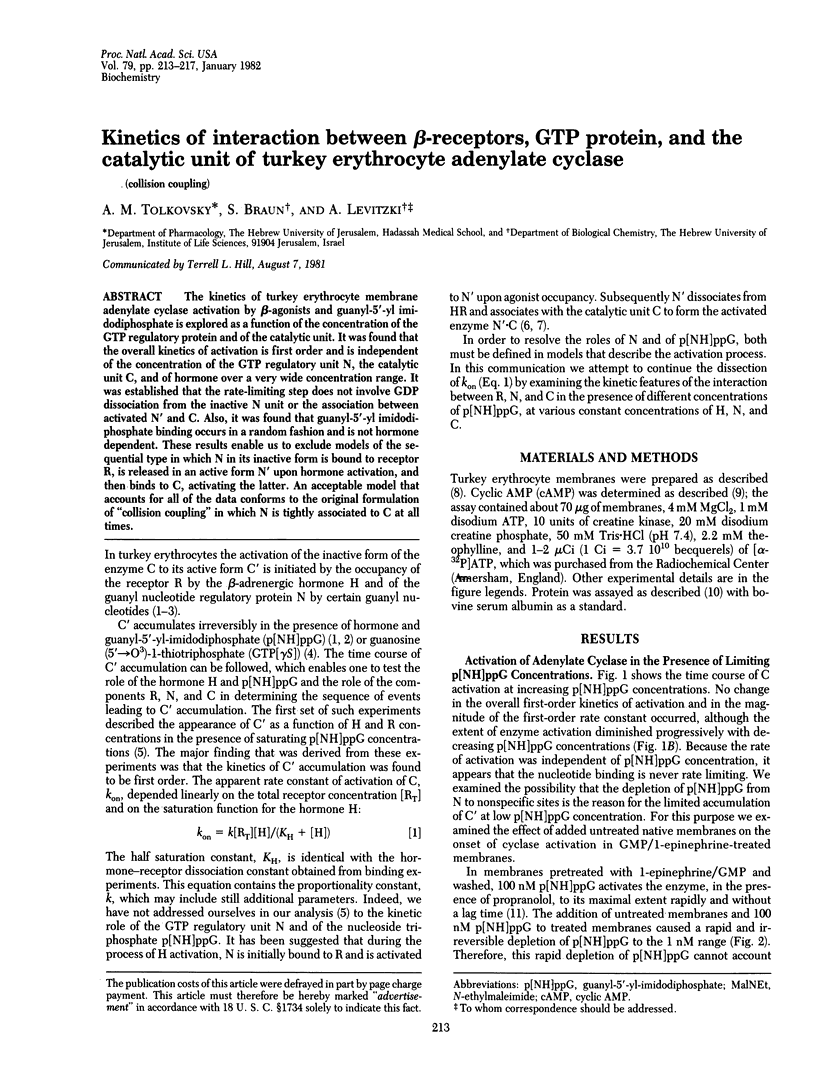
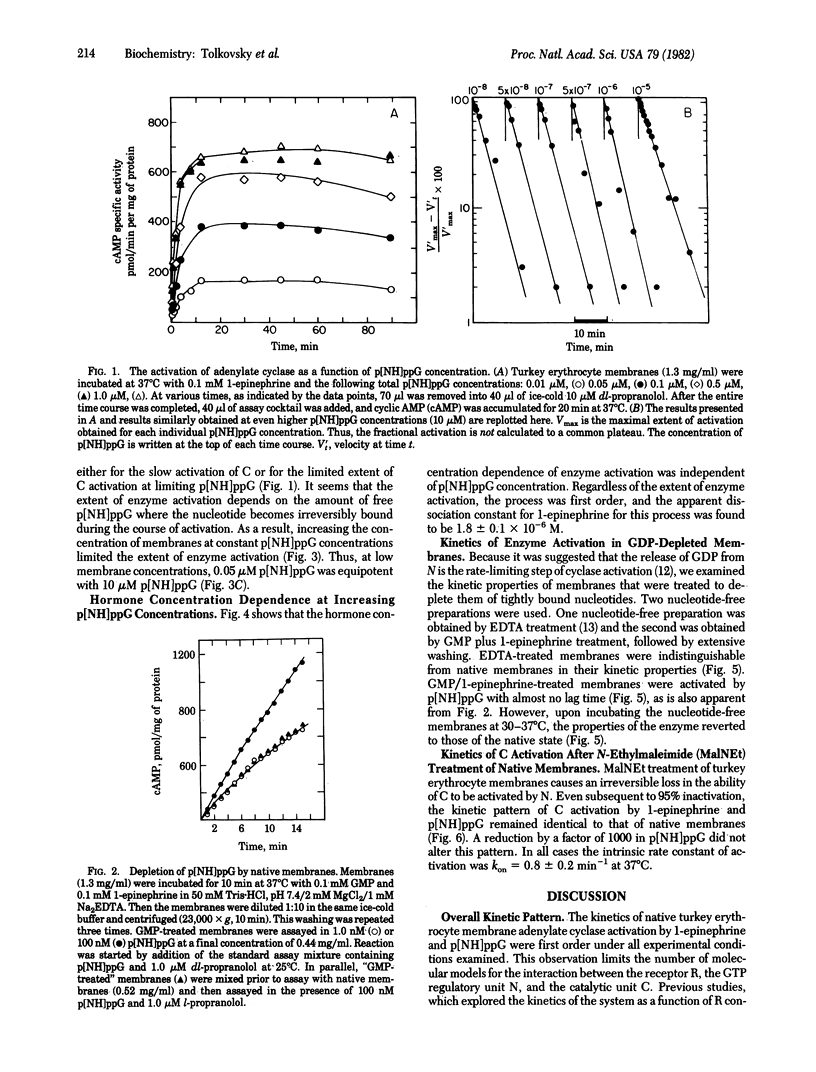
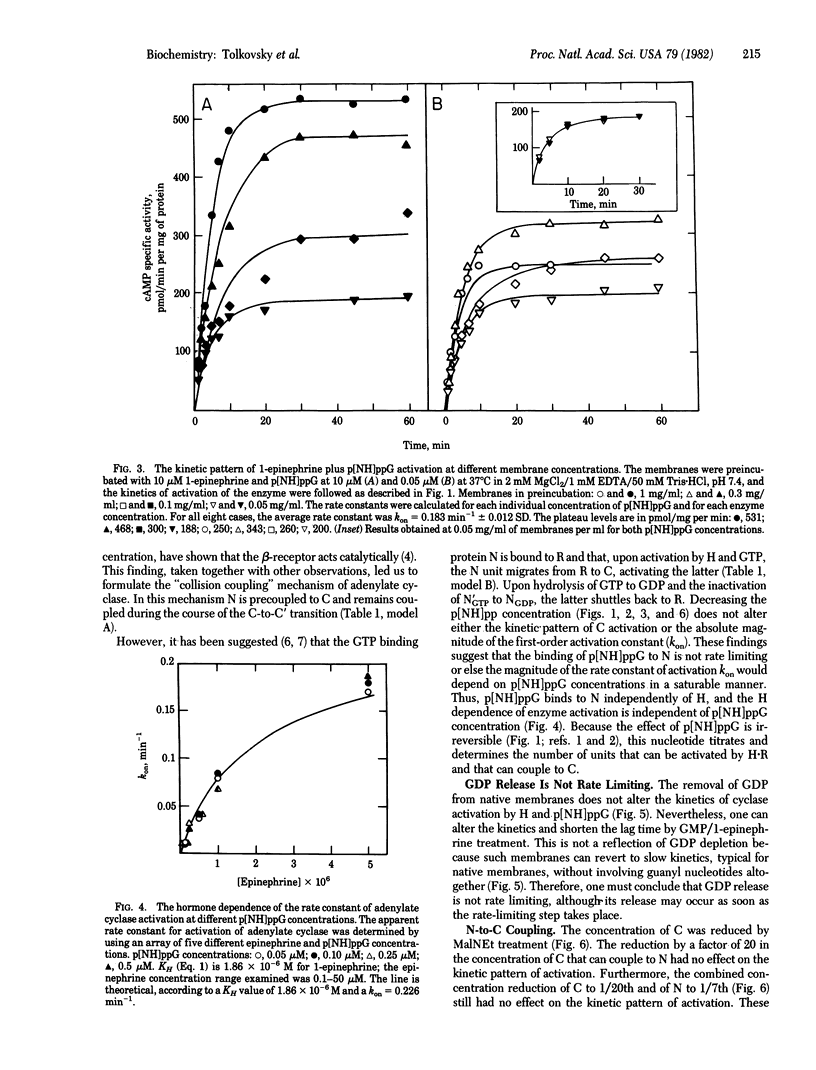
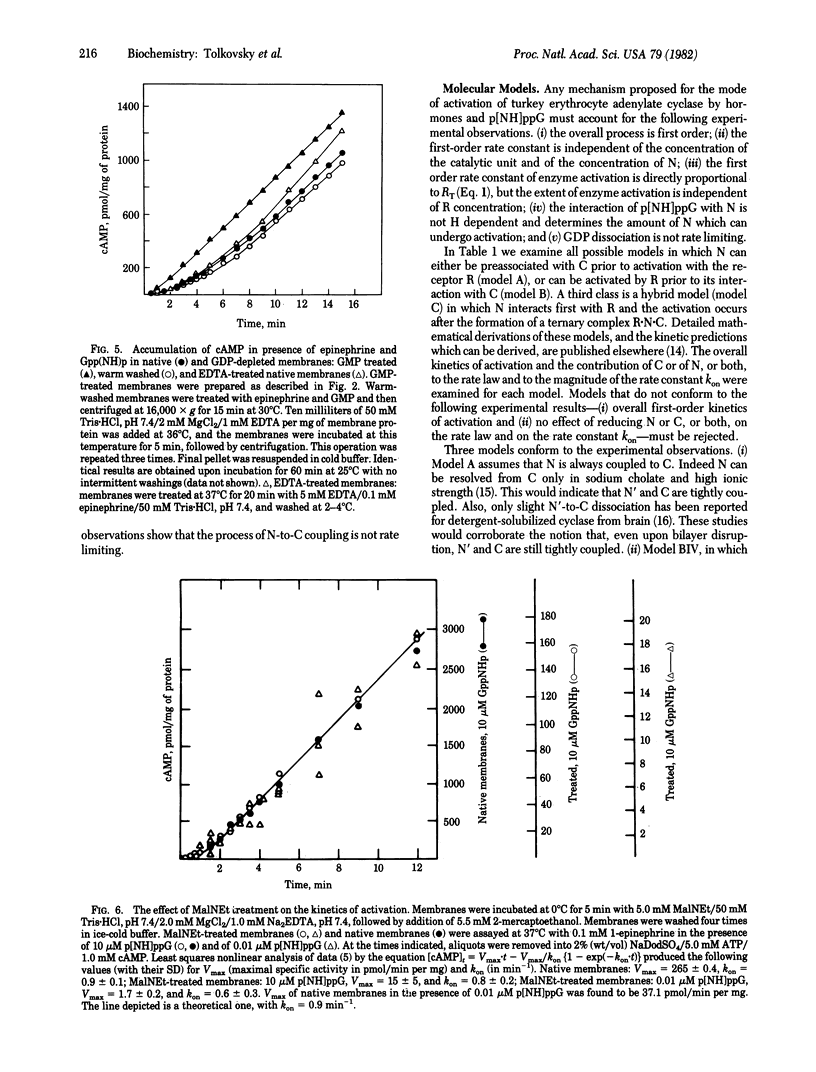
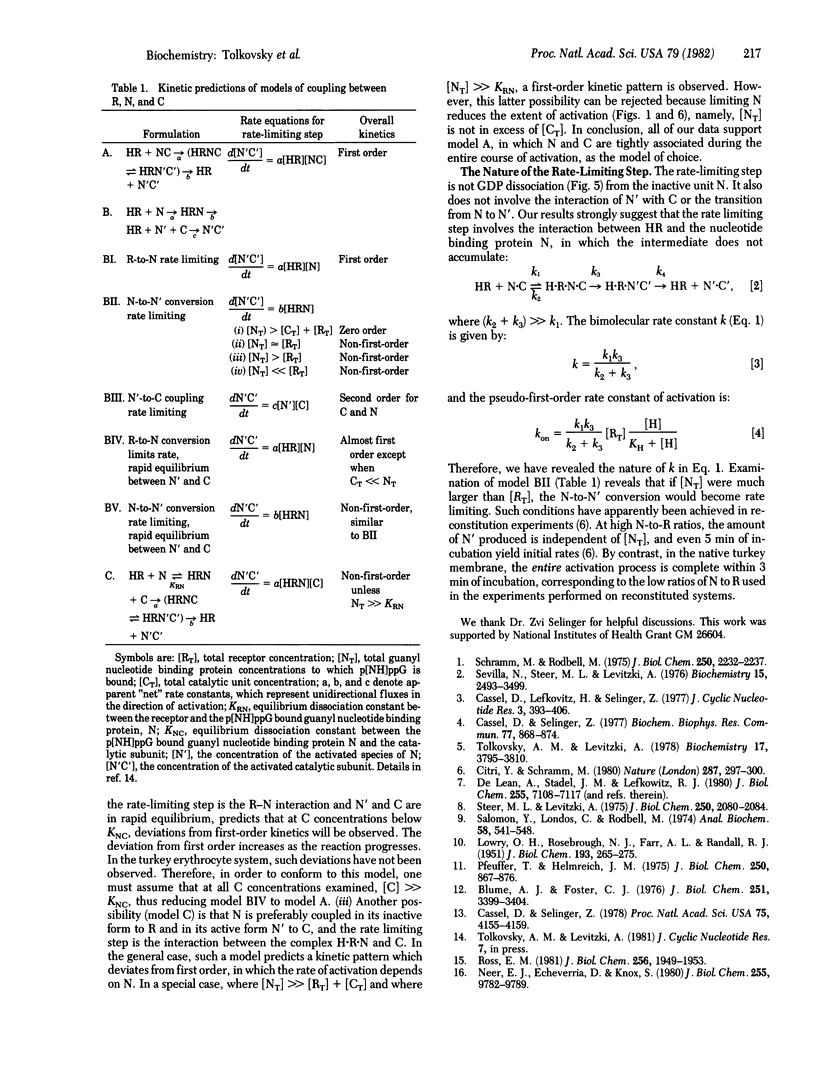
Selected References
These references are in PubMed. This may not be the complete list of references from this article.
- Blume A. J., Foster C. J. Neuroblastoma adenylate cyclase. Role of 2-chloroadenosine, prostaglandin E1, and guanine nucleotides in regulation of activity. J Biol Chem. 1976 Jun 10;251(11):3399–3404. [PubMed] [Google Scholar]
- Cassel D., Levkovitz H., Selinger Z. The regulatory GTPase cycle of turkey erythrocyte adenylate cyclase. J Cyclic Nucleotide Res. 1977 Dec;3(6):393–406. [PubMed] [Google Scholar]
- Cassel D., Selinger Z. Activation of turkey erythrocyte adenylate cyclase and blocking of the catecholamine-stimulated GTPase by guanosine 5'-(gamma-thio) triphosphate. Biochem Biophys Res Commun. 1977 Aug 8;77(3):868–873. doi: 10.1016/s0006-291x(77)80058-2. [DOI] [PubMed] [Google Scholar]
- Cassel D., Selinger Z. Mechanism of adenylate cyclase activation through the beta-adrenergic receptor: catecholamine-induced displacement of bound GDP by GTP. Proc Natl Acad Sci U S A. 1978 Sep;75(9):4155–4159. doi: 10.1073/pnas.75.9.4155. [DOI] [PMC free article] [PubMed] [Google Scholar]
- Citri Y., Schramm M. Resolution, reconstitution and kinetics of the primary action of a hormone receptor. Nature. 1980 Sep 25;287(5780):297–300. doi: 10.1038/287297a0. [DOI] [PubMed] [Google Scholar]
- De Lean A., Stadel J. M., Lefkowitz R. J. A ternary complex model explains the agonist-specific binding properties of the adenylate cyclase-coupled beta-adrenergic receptor. J Biol Chem. 1980 Aug 10;255(15):7108–7117. [PubMed] [Google Scholar]
- LOWRY O. H., ROSEBROUGH N. J., FARR A. L., RANDALL R. J. Protein measurement with the Folin phenol reagent. J Biol Chem. 1951 Nov;193(1):265–275. [PubMed] [Google Scholar]
- Neer E. J., Echeverria D., Knox S. Increase in the size of soluble brain adenylate cyclase with activation by guanosine 5'-(beta, gamma-imino)triphosphate. J Biol Chem. 1980 Oct 25;255(20):9782–9789. [PubMed] [Google Scholar]
- Pfeuffer T., Helmreich E. J. Activation of pigeon erythrocyte membrane adenylate cyclase by guanylnucleotide analogues and separation of a nucleotide binding protein. J Biol Chem. 1975 Feb 10;250(3):867–876. [PubMed] [Google Scholar]
- Ross E. M. Physical separation of the catalytic and regulatory proteins of hepatic adenylate cyclase. J Biol Chem. 1981 Feb 25;256(4):1949–1953. [PubMed] [Google Scholar]
- Salomon Y., Londos C., Rodbell M. A highly sensitive adenylate cyclase assay. Anal Biochem. 1974 Apr;58(2):541–548. doi: 10.1016/0003-2697(74)90222-x. [DOI] [PubMed] [Google Scholar]
- Schramm M., Rodbell M. A persistent active state of the adenylate cyclase system produced by the combined actions of isoproterenol and guanylyl imidodiphosphate in frog erythrocyte membranes. J Biol Chem. 1975 Mar 25;250(6):2232–2237. [PubMed] [Google Scholar]
- Sevilla N., Steer M. L., Levitzki A. Synergistic activation of adenylate cyclase by guanylyl imidophosphate and epinephrine. Biochemistry. 1976 Aug 10;15(16):3493–3499. doi: 10.1021/bi00661a015. [DOI] [PubMed] [Google Scholar]
- Steer M. L., Levitzki A. The control of adenylate cyclase by calcium in turkey erythrocyte ghosts. J Biol Chem. 1975 Mar 25;250(6):2080–2084. [PubMed] [Google Scholar]
- Tolkovsky A. M., Levitzki A. Mode of coupling between the beta-adrenergic receptor and adenylate cyclase in turkey erythrocytes. Biochemistry. 1978 Sep 5;17(18):3795–3795. doi: 10.1021/bi00611a020. [DOI] [PubMed] [Google Scholar]


